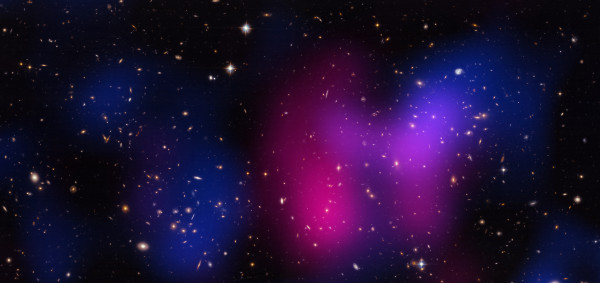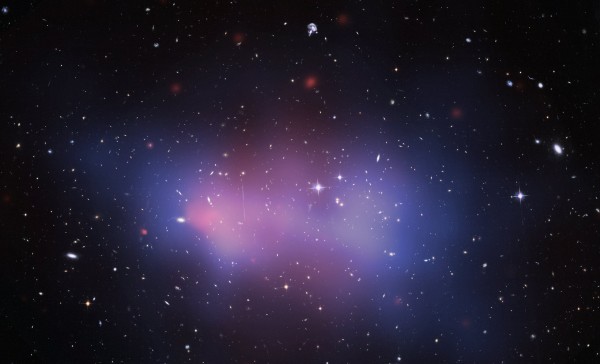"It may be that ultimately the search for dark matter will turn out to be the most expensive and largest null result experiment since the Michelson-Morley experiment, which failed to detect the ether." -John Moffat
Dark matter is a puzzle that's now more than 80 years old: the presence of all the known, observable, detectable normal matter -- the stuff in the standard model -- cannot account for the gravitation of the astronomical objects we observe. But despite our inability to create or detect it in a laboratory, we're certain of its existence in the Universe.
The true test of this comes from colliding galaxy clusters, which show a distinct separation between all the known "normal" components, which collide, heat up and emit light, and the gravitational components, which very clearly don't. At this point, over a dozen distinct colliding clusters show this effect, from some of the smallest known galactic groups to the largest colliding cluster in the Universe: El Gordo.



... and cue Denier ...3, 2, 1...